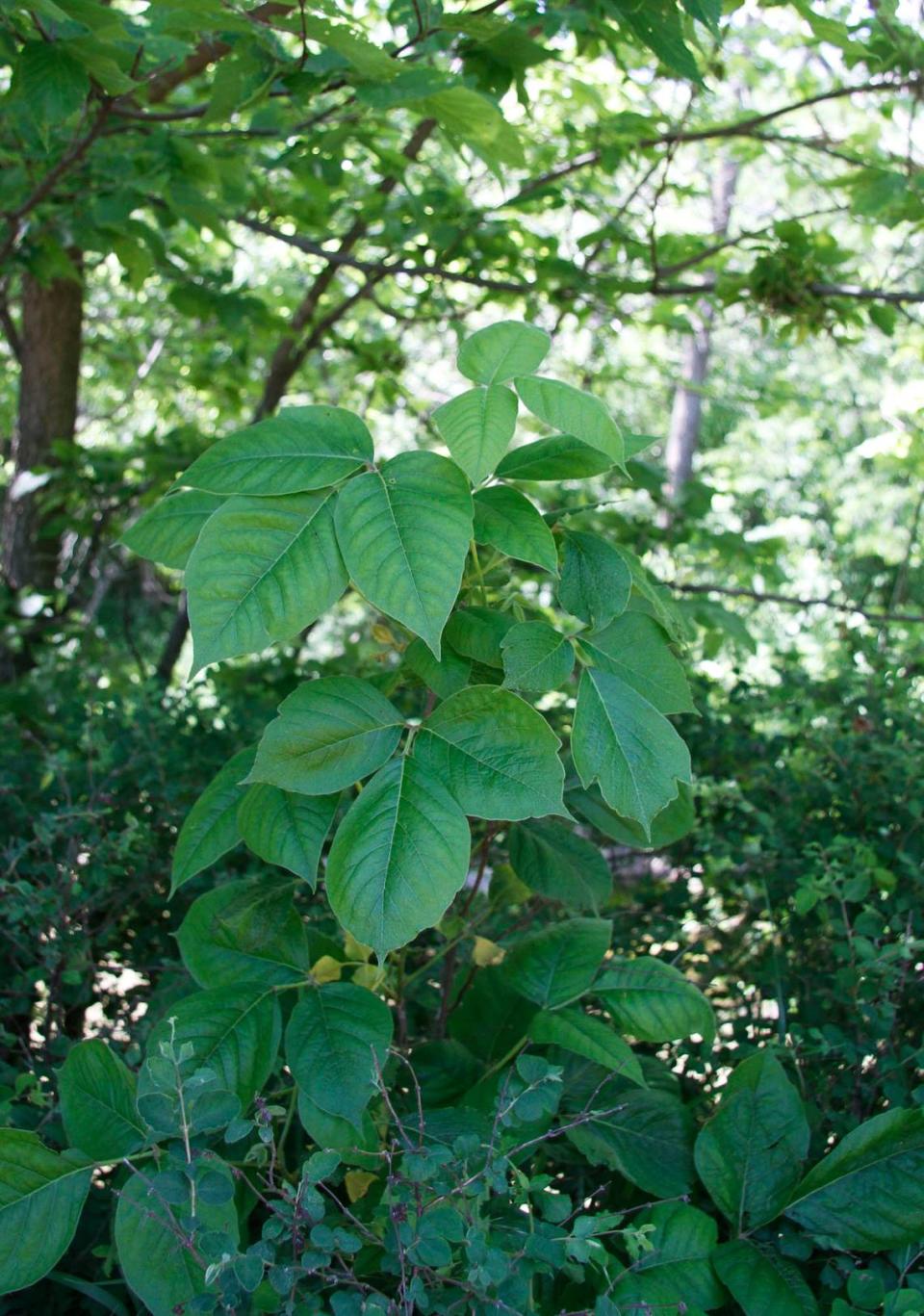Spot poison ivy in Kansas? How to identify the plant, plus tips if you brush against it
It’s nearly summertime, but before you go outside to enjoy the warmer weather and get out your gardening tools, remember to keep your eye out for poison ivy.
While its cousins poison oak and sumac are not found in Kansas, poison ivy is native to the region and two types can be found in the state, Toxicodendron radicans in the eastern part of the state and Rydberg’s poison ivy (scientific name Toxicodendron rydbergii) in the western portion.
Poison ivy, which causes an allergic reaction known as contact dermatitis, is a rampant outdoor irritant in many U.S. states. Allergic reactions from poison ivy, sumac and oak are extremely common and affect up to 50 million Americans each year, the American Skin Association reports.
For those headed outdoors this spring and summer, we’ve rounded up some expert advice on spotting poison ivy, how to remove it from your yard if it has cropped up and what to do if your skin comes in contact with the plant.
How to identify poison ivy — and its lookalikes
Matthew McKernan, horticulture agent with Kansas State University Research and Extension, said poison ivy grows in two forms in Kansas: a shrub and a vine.
The shrub form is usually 1 to 3 feet tall with many little stems growing together to form a clump. The vine, on the other hand, usually grows vertically on trees. While both types are common in Kansas, the shrub form is usually the kind people come in contact with the most.
The common phrase “leaves of three, let it be” is a good starting point when trying to identify poison ivy, but some other common plants sport three leaves.
The leaves on a poison ivy plant in the summertime can be different shades of green, sometimes glossy, sometimes dull. The plant has a compound leaf made up of three leaflets that all grow out from the stem. The bottom two will be closely attached to the stem, while the third will have a long stalk. The edges of the leaves can vary, from many lobes to entirely smooth.
In autumn, or after damage to the plant, the leaves of poison ivy typically turn scarlet in color, according to the extension.
In addition to leaves, the poison ivy plant can also have “greenish-white” flowers and “whitish-yellow” berry clusters, the U.S. Food and Drug Administration says.

The oil urushiol is found in poison ivy’s leaves, stem and roots. It can cause itchy rashes when it comes in contact with skin. The rash usually develops around 12 to 48 hours after contact and it can last two to three weeks, according to the Mayo Clinic.
If you do think you may have spotted poison ivy but aren’t entirely sure, there are two lookalikes you can compare it to:
The first is Virginia creeper, which can look very similar to poison ivy, but instead of three leaflets, it has five.
Another one is fragrant sumac, which has three leaflets, but they are attached differently and have a different shape than poison ivy.
If you have photos of a plant and want help identifying it, you can contact K-State Research and Extension’s garden hotline at 316-660-0190.
How should I remove poison ivy from my Kansas yard?
There are multiple ways to remove poison ivy from your yard or garden.
First, you can remove it by spraying chemicals onto it, which helps you avoid coming in physical contact with the plant. McKernan recommends using something with the active ingredient triclopyr.
“That one is going to be typically branded oftentimes as a brush and stump killer, and so that will typically be a little more effective against poison ivy than some of the other products out there,” he said.
You can also hand-pull poison ivy, but beware if you use this method.
“With that typically comes the increased risk of skin contact ... that may cause the irritation or cause people to break out with the rash,” McKernan said.
If you have a single plant you’re needing to pull out, the horticulture agent said some people cover the plant with a trash bag and then pull out the roots to avoid contact.
You should never burn poison ivy to remove it, as the smoke will carry the oil and can also cause reactions, like difficulty breathing.
What should I do if I come in contact with poison ivy?
If you believe you came into contact with the poisonous plant, the first thing you should do is wash the affected area with soapy water to get rid of any possible oils. You should also wash your clothes and any tools or gloves that may have also come in contact with the plant.
Just because you came into contact with poison ivy before without a reaction doesn’t mean you aren’t allergic to poison ivy.
A rash from poison ivy often is in a straight line due to how the skin comes in contact with the plant. The severity depends on how much oil was transferred, and the rash’s symptoms can include redness, itching, blisters and swelling, according to the Mayo Clinic.
A poison ivy rash usually goes away on it’s own, but if it’s widespread your health care provider could prescribe something.
For at-home remedies, the Mayo Clinic recommends you:
Apply over-the-counter cortisone cream
Apply creams that have menthol in them
Place a cool, wet compress on the rash multiple times a day
Take over-the-counter allergy medications, like Benadryl
Take a cool bath with a half cup baking soda or an oatmeal-based bath product
Note: This story was updated May 17, 2023 at 1:47 p.m. to correct the range of certain types of poison ivy.

